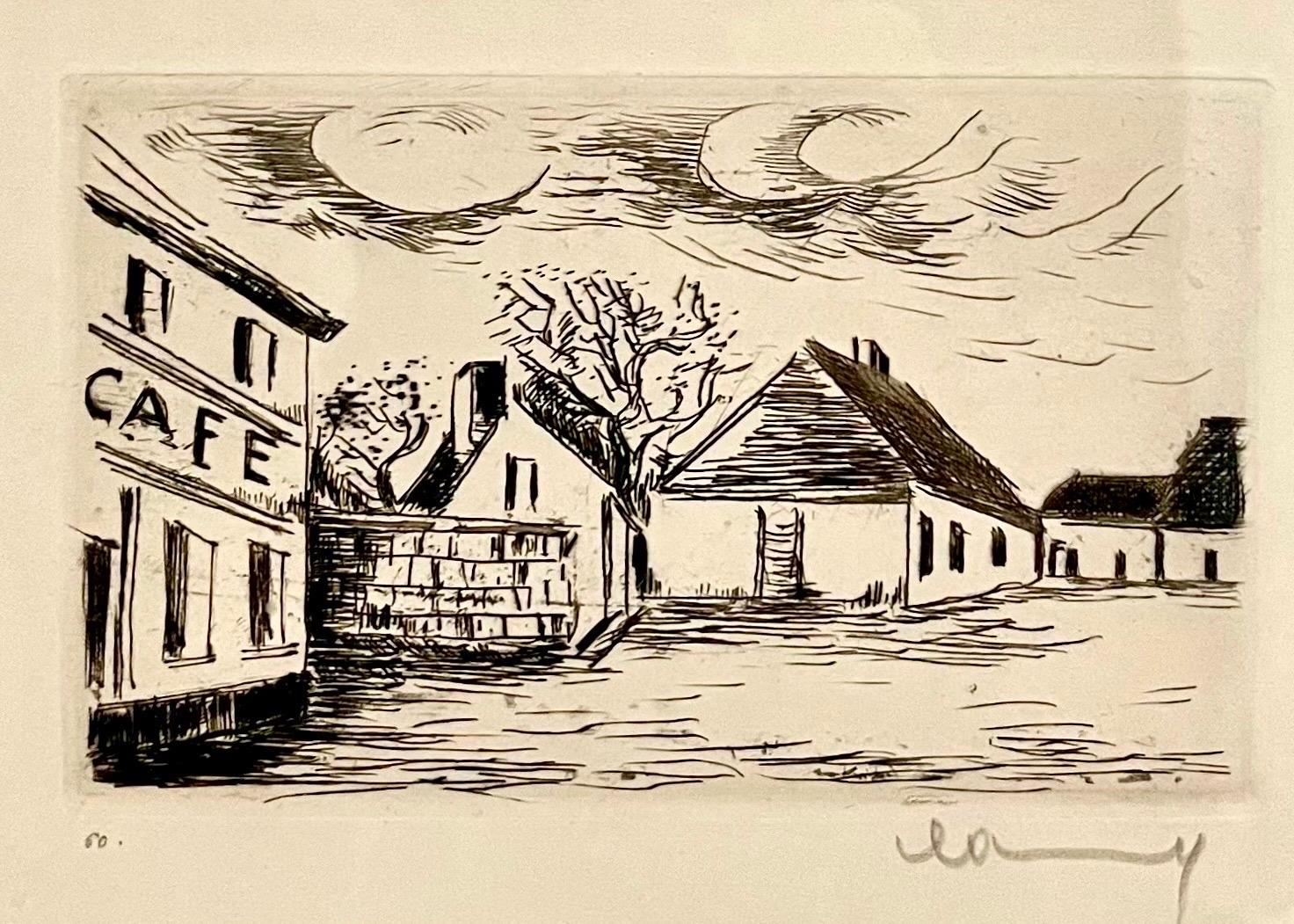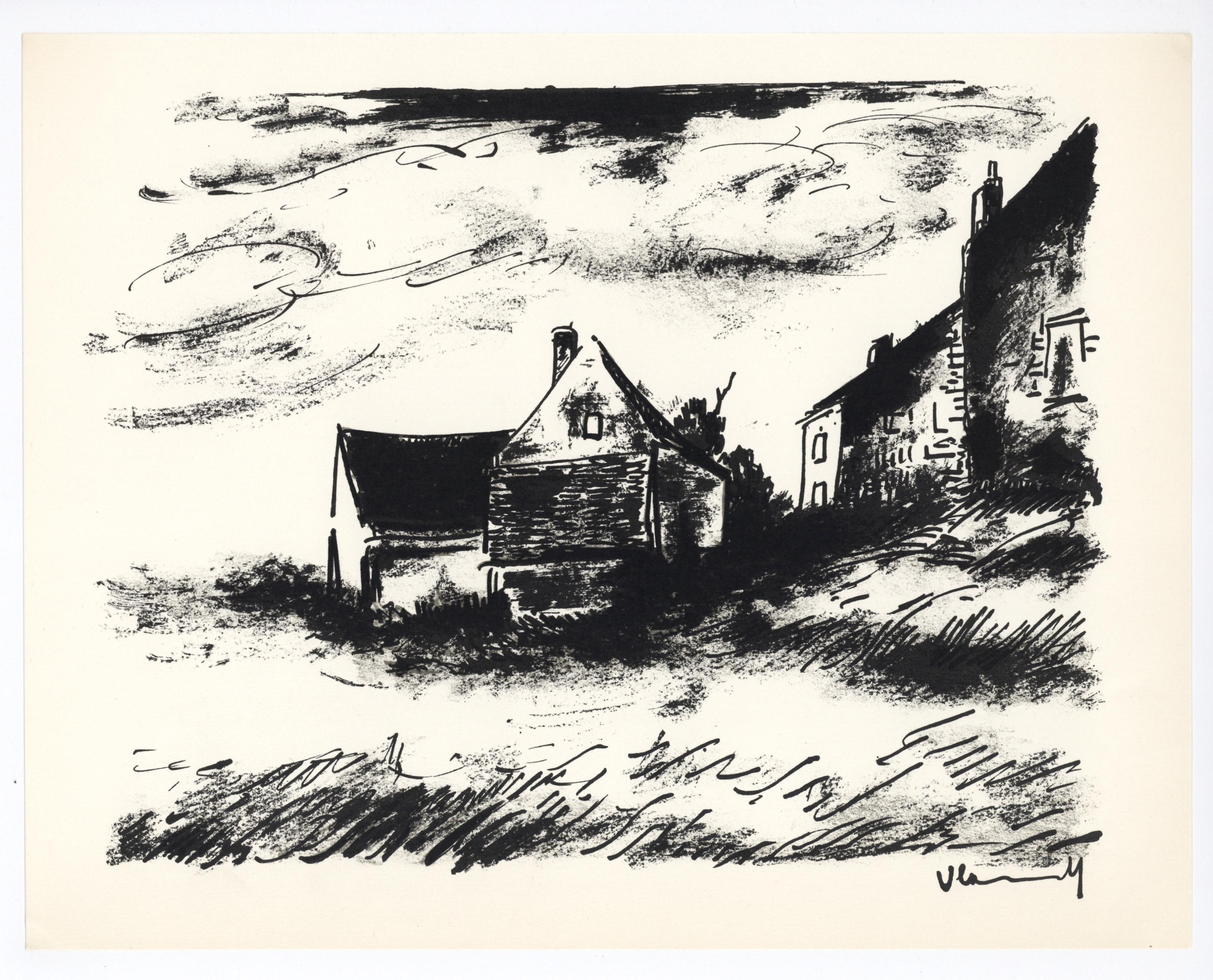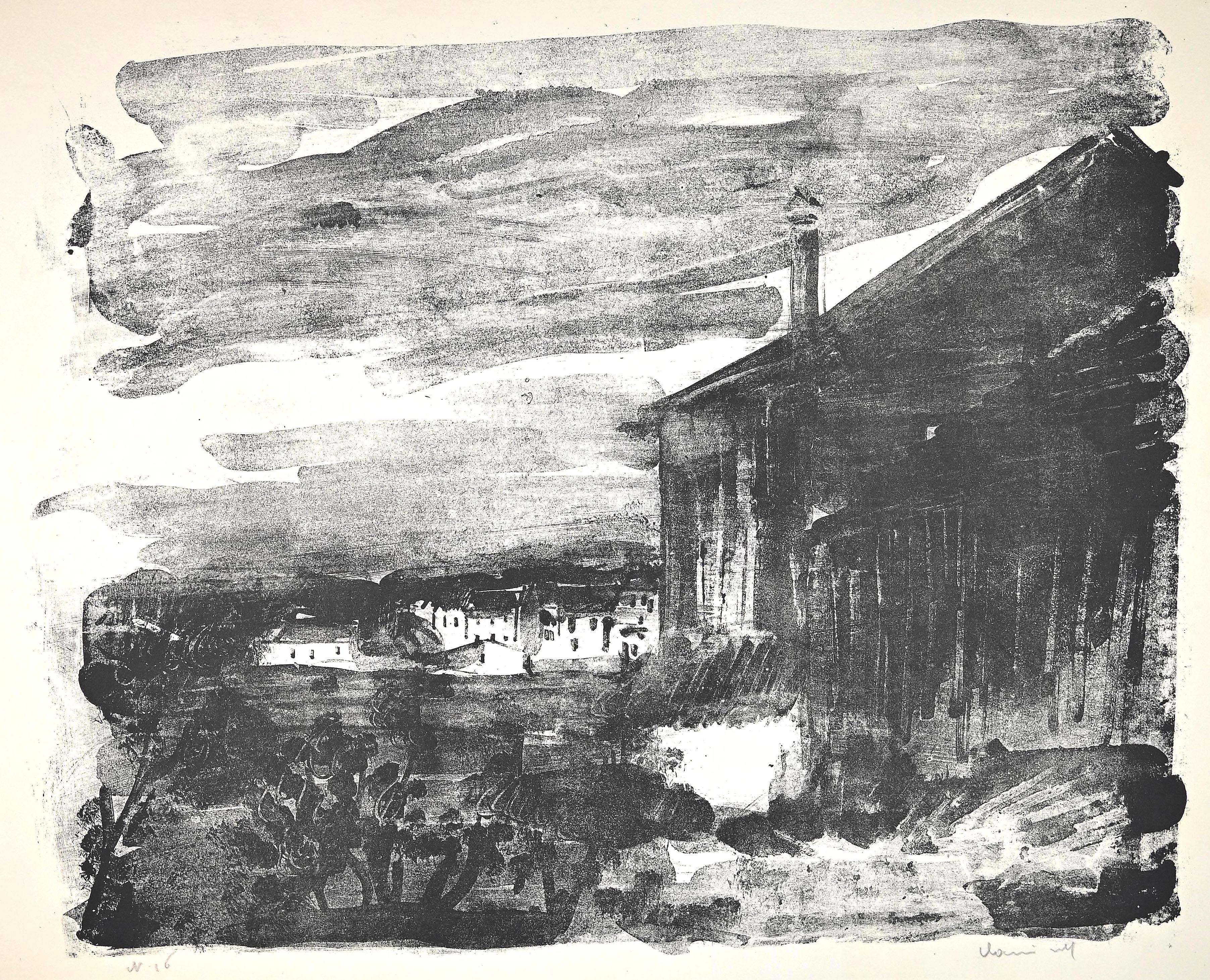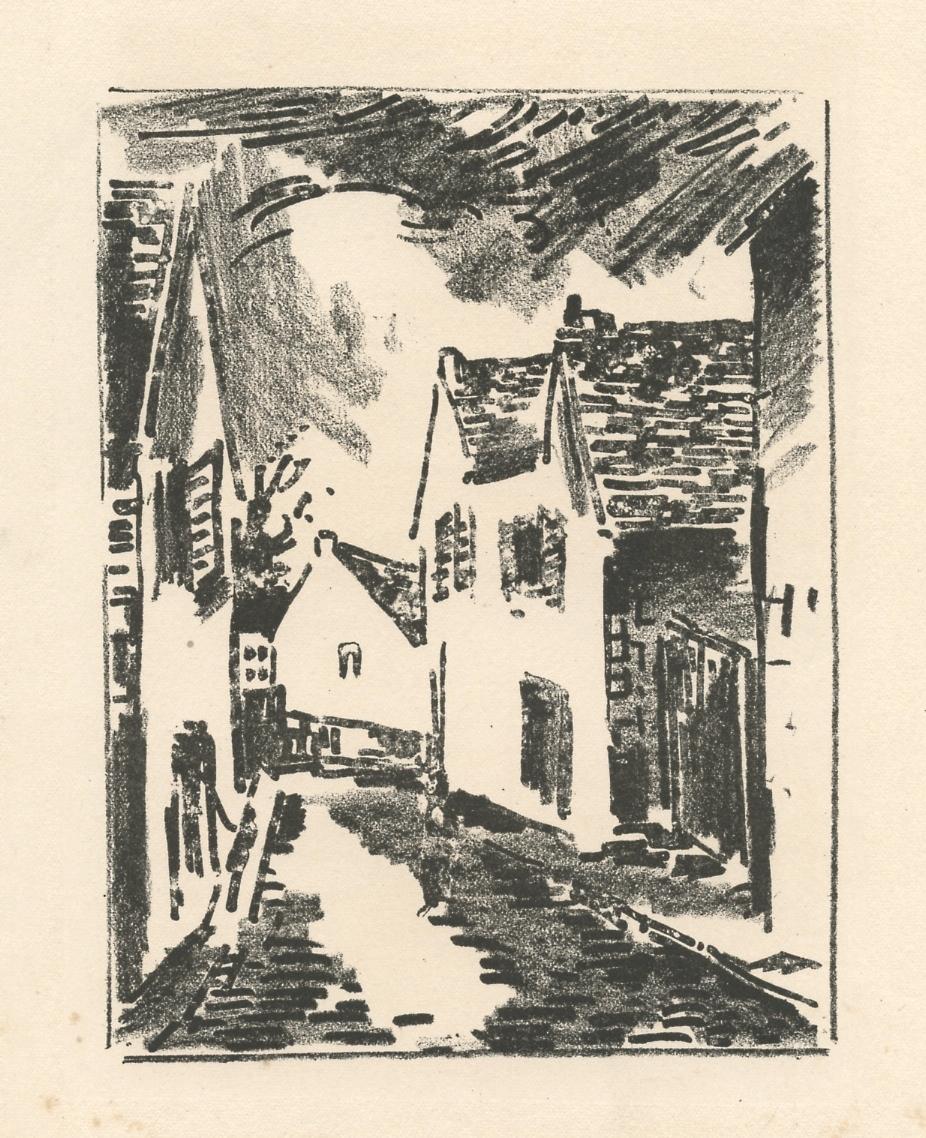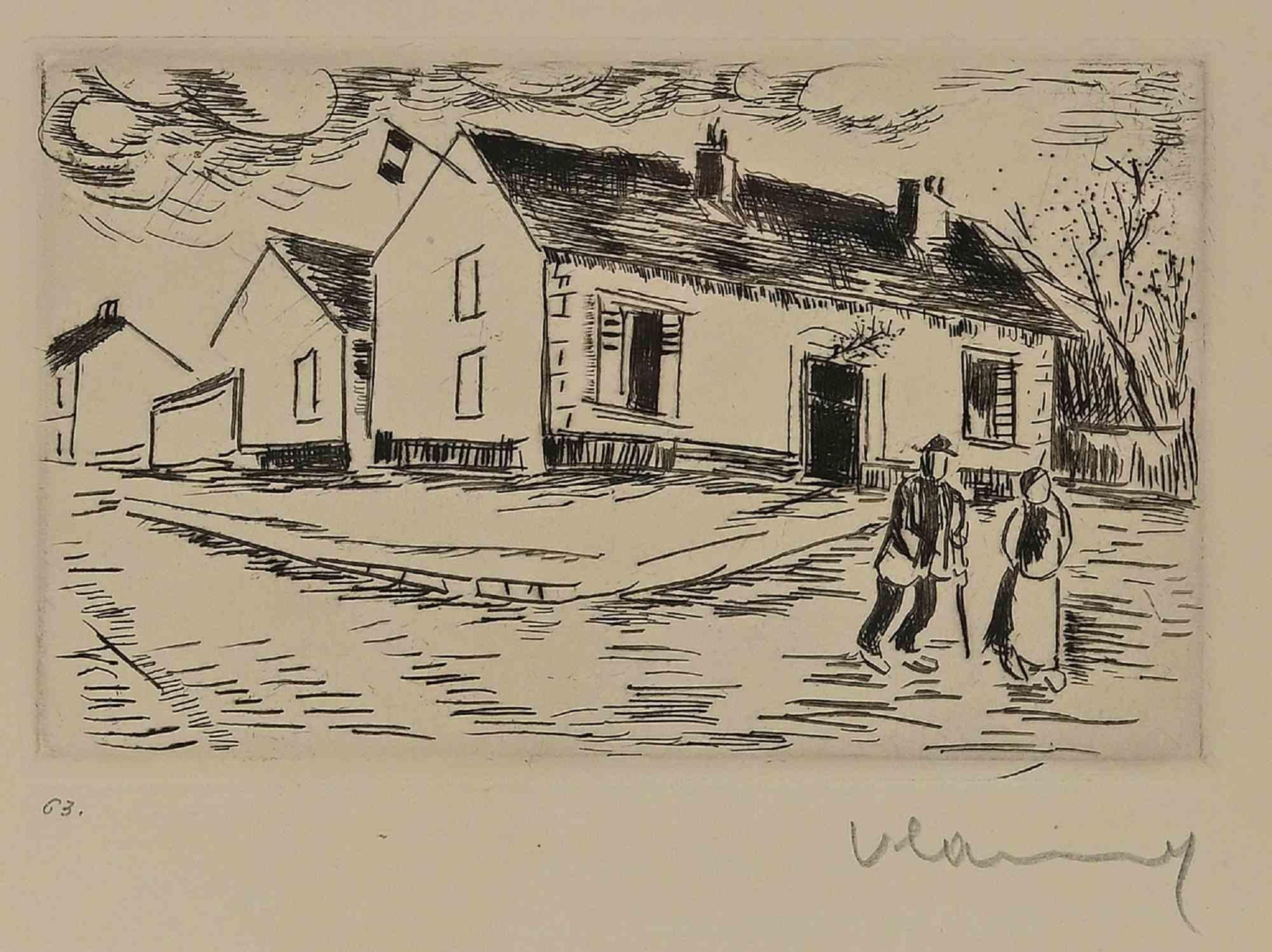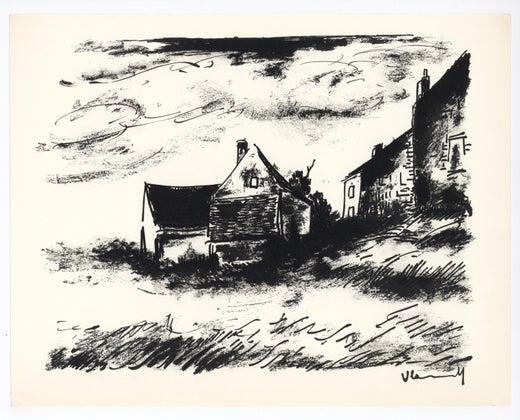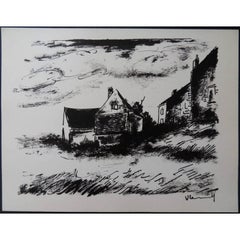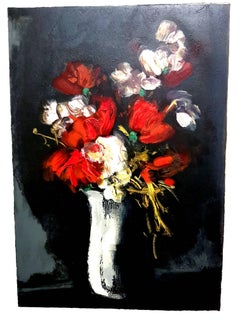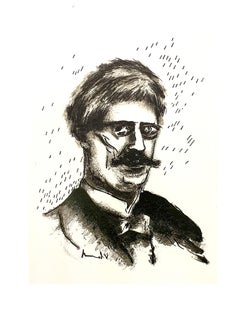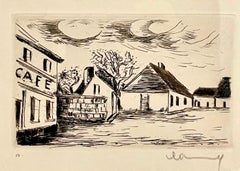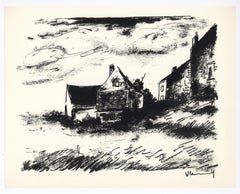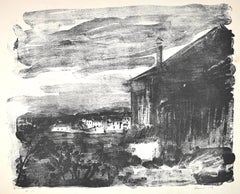Items Similar to Maurice de Vlaminck - Original Handsigned Etching
Want more images or videos?
Request additional images or videos from the seller
1 of 11
Maurice de VlaminckMaurice de Vlaminck - Original Handsigned Etching1924
1924
$2,841.88
£2,150.31
€2,400
CA$3,978.39
A$4,339.22
CHF 2,286.40
MX$52,038.77
NOK 28,788.65
SEK 26,859.23
DKK 18,282.24
About the Item
Maurice de Vlaminck - Original Handsigned Etching
Title: L'Oise à Cergy
Reference: Catalogue raisonné Walterskirchen, n°110.
Original etching, hand-signed in pencil by the artist ; also signed in the plate at the bottom left corner of the image.
Dimensions: Paper sizes: 32,7 x 50,9 cm ; image sizes: 23,5 x 32 cm.
Support: Hollande paper.
1924
Maurice de Vlaminck
Maurice de Vlaminck (1876-1958) was born in Paris, in 1876, and was born in to a family of famous musicians. He learned to play violin, and was taught by his father in his late teens. He turned his attention to art, in 1893, when he began to study under Henri Rigalon. In 1984 Vlaminck married Suzanne Berly. He served in the army, and during the end of his career, met André Derain, on a train ride home, in 1984, which is where his artistic lifestyle, and his illustrious career as an artist took a turn. Although he served in the army until the end of 1900, he immediately opened a small art studio with Derain, the famous artist he had become friends with on his train ride years prior.
Artworks
Some of Maurice de Vlaminck’s most famous works include Sur le zinc (1900) Le’homme a la pipa (1900), La Siene a Chatou, Le Pont de Chatou, Toulouse Lautrec, and several landscape paintings and paintings of homes which were inspired by Chatou (which he lived in for the years following 1900 when he opened the studio).
Art Style
Seine-ChatouMost of Maurice de Vlaminck’s work was considered to be work that was developed during the Fauve movement. He, along with Derain, and Matisse were considered the principle figures in the start of this movement with their revolutionary works. This style of painting, which was formed by the modern artists, is known for use of bright and intense colors in the works they depicted.
In many of his earlier pieces, the artist seemed to lack attention to detail. He would not pay attention to detail, and he would instead use the bright colors and thicker brush strokes to create landscapes that depicted his emotions and the way he was feeling, as opposed to actually putting in much effort to create detailed design styles in the works he created for the majority of his earlier career in art.
Influences
Much of Vlaminck’s works were similar to those works known as Impressionist art works. Van Gogh was one of his influences, and after taking a visit to a museum, Vlaminck fell in love with the artist’s style and take on art. Later on in his career, many of his art works become more monochromatic, and a major influence that he followed was Cezzane.
Later art works
In the later portion of his career, Vlaminck diverted from the bright colors and the style which he had developed early on in his career. Much of his work began to draw on a darker palette and color choices. This was contrasted by heavy white strokes of paint on the canvas, to give his work a distinct and unique design theme.
The French Fauvist painter drew from several influences, and was one of the founders of the Fauve movement which he became so famous for. Although his later works strayed, and took a unique turn, many art enthusiasts love the painter’s unique creations, and his use of thick brushstrokes and unique color blends in paintings.
- Creator:Maurice de Vlaminck (1876-1958, French)
- Creation Year:1924
- Dimensions:Height: 12.88 in (32.7 cm)Width: 20.04 in (50.9 cm)
- Medium:
- Movement & Style:
- Period:
- Condition:
- Gallery Location:Collonge Bellerive, Geneve, CH
- Reference Number:1stDibs: LU16122113403
Maurice de Vlaminck
Maurice de Vlaminck was a French painter, best known as one of the spearheads of the Fauvism movement at the start of the 20th century. His reputation rests predominantly on his landscapes, though he also produced still lifes and portraits. Born in Paris in 1876, Vlaminck had relatively little artistic training and, as a young man, dreamt of becoming a professional cyclist. A chance encounter in 1900, however, when he was nearing the end of his national service in the army, proved fateful. It was with the budding artist, André Derain, whom he met when a train they were aboard derailed. The pair lived in the small town of Chatou, a few miles along the River Seine from Paris, and they chose to complete their homeward journey from the French capital that day on foot. They struck up a friendship, and before long were sharing a studio. Derain and Vlaminck would become, alongside Henri Matisse, the driving forces behind Fauvism, the first avant-garde art movement of the 20th century. Partly inspired by the recent innovations of Paul Gauguin and Vincent van Gogh, it was characterised by aggressive brushwork, simplified forms and intense non-naturalistic colours. Its name came from the reaction of a critic in 1905 who compared the artists to fauves (‘wild beasts’). Vlaminck enjoyed painting in primary colours, and is particularly associated with scenes set in and around Chatou. Standout examples include Restaurant de la Machine à Bougival (1905) (today found in the Musée d'Orsay) and The Seine at Chatou (1906) (found in the Metropolitan Museum of Art in New York). The poet Guillaume Apollinaire hailed Vlaminck as ‘the wildest of the Fauves’. In the years immediately before the outbreak of World War I, the artist’s style shifted. His palette grew slightly more sombre, and there was a greater emphasis on solidity and a landscape's underlying structure. This revealed the influence of Paul Cezanne — the subject of a ground-breaking, posthumous retrospective in Paris in 1907. Vlaminck worked in a munitions factory during the war. His paintings after it were much darker and more realistic than those with which he had made his name. He died in 1958, aged 82.
About the Seller
4.9
Gold Seller
Premium sellers maintaining a 4.3+ rating and 24-hour response times
Established in 2015
1stDibs seller since 2015
969 sales on 1stDibs
Typical response time: 1 hour
- ShippingRetrieving quote...Shipping from: Collonge Bellerive, Geneve, Switzerland
- Return Policy
More From This Seller
View AllMaurice de Vlaminck - House in Rueil - Original Lithograph
By Maurice de Vlaminck
Located in Collonge Bellerive, Geneve, CH
Maurice de Vlaminck
Original Lithograph
Signed in the plate
1958
Title: House in Beauce
Dimensions: 22 x 27 cm
Reference: Catalogue raisonné Walterskirchen 275
Condition : Excellent
Maurice de Vlaminck (1876 - 1958)
Maurice was three years old when his family moved from Paris to Vésinet. He first pursued the same musical career as his parents, who were both musicians, leaving his home as a trained double-bass player in 1892 to move to Chatou near Versailles. After absolving his military service in Vitré Maurice Vlaminck worked as a musician until he accidentally met André Derain in 1900.
It was Derain who kindled Vlaminck's artistic ambitions. He decided to become a painter and rented an old hut in which he and Derain shared a studio. A crucial turning point in Vlaminck's artistic development was a visit to a van Gogh exhibition...
Category
1950s Impressionist Landscape Prints
Materials
Lithograph
Maurice de Vlaminck - Paris' Souflot Street - Original Etching
By Maurice de Vlaminck
Located in Collonge Bellerive, Geneve, CH
Maurice de Vlaminck - Paris' Souflot Street - Original Etching
Dimensions : 13 x 10".
Paper : Rives vellum.
Edition : 225 copies.
1927
From Tableaux de Paris, Emile-Paul Frere...
Category
1920s Modern Portrait Prints
Materials
Etching
Flowers - Lithograph
By (after) Maurice de Vlaminck
Located in Collonge Bellerive, Geneve, CH
(after) Maurice de Vlaminck
Title: Flowers
Signed in the plate
Dimensions: 38 x 28 cm
from the edition of 250 as issued in Warnod, Andre, "Les Peintres mes amis" (Paris: Les Heures Claires, 1965)
Maurice de Vlaminck (1876 - 1958)
Maurice was three years old when his family moved from Paris to Vésinet. He first pursued the same musical career as his parents, who were both musicians, leaving his home as a trained double-bass player in 1892 to move to Chatou near Versailles. After absolving his military service in Vitré Maurice Vlaminck worked as a musician until he accidentally met André Derain in 1900.
It was Derain who kindled Vlaminck's artistic ambitions. He decided to become a painter and rented an old hut in which he and Derain shared a studio. A crucial turning point in Vlaminck's artistic development was a visit to a van Gogh exhibition...
Category
1960s Modern Portrait Prints
Materials
Lithograph
Maurice de Vlaminck - Portrait - Original Lithograph
By Maurice de Vlaminck
Located in Collonge Bellerive, Geneve, CH
Maurice de Vlaminck - Portrait - Original Lithograph
1956
Signed in the plate
Dimensions: 22 x 16 cm
Publisher: Sauret.
Frontispice of The Hunger
Category
1950s Abstract Expressionist Abstract Prints
Materials
Lithograph
Dufza - Paris - Quai de la Tournelle - Original Handsigned Etching
Located in Collonge Bellerive, Geneve, CH
Dufza - Paris - Quai de la Tournelle - Original Handsigned Etching
Circa 1940
Handsigned in pencil
Dimensions: 20 x 25 cm
Unumbered as issued
Category
1940s Modern Nude Prints
Materials
Etching
Edmond Céria - Paris, Quais de Orfèvres - Original Etching
By Edmond Céria
Located in Collonge Bellerive, Geneve, CH
Charles Martin - The Eiffel Tower - Original Lithograph
Dimensions : 13 x 10".
Paper : Rives vellum.
Edition : 225 copies.
1927
From Tableaux de Paris, Emile-Paul Freres, Pari...
Category
1920s Modern Landscape Prints
Materials
Etching
You May Also Like
Hand Signed in Pencil Etching Cafe de Paris Visage de Maisons Maurice Vlaminck
By Maurice Vlaminck
Located in Surfside, FL
Maurice Vlaminck
Le Cafe de Paris, Pl. X, from Visage des Maisons, c. 1927 (Walterskirchen 132)
Etching on Van Gelder laid paper, signed in pencil, trial proof with the blindstamp o...
Category
1920s Modern Landscape Prints
Materials
Etching
Moulin de la Naze - Original lithograph, (K. de Walterskirchen #181)
By Maurice de Vlaminck
Located in Paris, IDF
Maurice de VLAMINCK
Moulin de la Naze
Original lithograph
Printed signature in the plate
On Chine paper 27.5 x 36.5 cm (c. 10.6 x 14.2 in)
Blind stamp of the editor
REFERENCES :
-...
Category
1920s Modern Landscape Prints
Materials
Lithograph
"Potiniere at Rueil" original lithograph
By Maurice de Vlaminck
Located in Henderson, NV
Medium: original lithograph. Printed in Paris in 1958 at the Mourlot atelier, and published by Andre Sauret in an edition of 2000. Size: 9 1/2 x 12 1/4 inches (242 x 310 mm). Signed ...
Category
1950s Landscape Prints
Materials
Lithograph
Environs de Triel - Lithograph by Maurice de Vlaminck - 1920s
By Maurice de Vlaminck
Located in Roma, IT
Fine print on vélin fort “Arches”, numbered and signed in pencil by the artist.
Small stain on right margin of the sheet. Light oxidation on bottom right angle.
Full margins.
Ref...
Category
1920s Modern Landscape Prints
Materials
Lithograph
original lithograph
By Maurice de Vlaminck
Located in Henderson, NV
Medium: original lithograph. Printed in Paris in 1921 on Lafuma-Navarre wove paper, and issued in a limited edition of 300 for Georges Duhamel's "Trois journees de la tribu". Size: t...
Category
1920s Prints and Multiples
Materials
Lithograph
Village - Etching by M. de Vlaminck - 1950
By Maurice de Vlaminck
Located in Roma, IT
Village is a modern artwork realized by Maurice de Vlaminck in 1950.
Black and white etching.
Hand signed and dated on the lower margin.
Edition of 100 specimen as reported on th...
Category
1950s Post-Impressionist Landscape Prints
Materials
Etching
More Ways To Browse
Peter Lind
Peter Max Kentucky Derby
Peter Max Mini
Pink Vintage Bathtub
Rick Dula On Sale
Robert Longo Wave
Ron Lawson
Rosamond Tudor On Sale
Rowena Fry
Roy Lichtenstein Sunrise
Salvador Dali The Alps
Salvador Dali Venice
Stephen McMillan On Sale
Stetson Etching
Thomas Kelly Print
Vintage Arsenal Posters
Vintage Standing Santa
Vintage Victory Garden Poster
